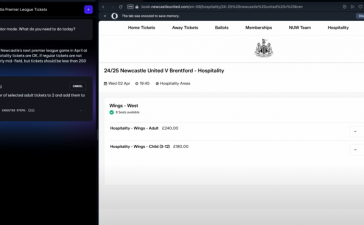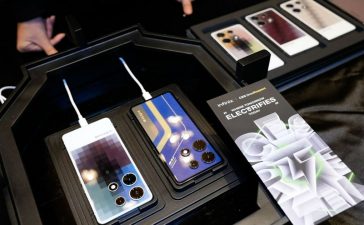Pre-eclampsia is a dangerous pregnancy complication, once so mysterious it was dubbed “the disease of theories”, but the obstetric physician Christopher Redman greatly improved the understanding of how to treat it and why it develops. Redman, who has died aged 82, spent his career at the John Radcliffe hospital in Oxford, where he set up the world-class Silver Star Unit to care for women with pre-eclampsia and other complex pregnancies. He was an early pioneer of computer technology, creating a sonicaid monitoring device that bears his name, and which is used today in about 130 countries to analyse unborn babies’ health and has saved countless lives.
Redman initially intended to become a paediatrician, but his career path changed in 1970. Then a junior lecturer in Oxford University’s department of medicine, he was asked to run a trial on women with high blood pressure as a result of pre-eclampsia.
Physicians treating women with pre-eclampsia walk a fine line. It is life-threatening and only resolved by delivering the baby, but doctors like to buy time if they can by treating the symptoms, as a baby born very prematurely will struggle to survive.
The drugs Redman gave lowered the women’s blood pressure, but did not avert tragedy: all the babies died. The neonatal and maternal facilities in the early 1970s were primitive, pre-eclampsia was a mystery, and in particular Redman was frustrated that identifying when an unborn baby was in distress was largely guesswork.
Redman was a gentle, mild-mannered man, but also very focused and desperate to improve his patients’ lot. Discovering that midwives on the nearby labour ward had a brand-new piece of kit they were not using – a foetal heart monitor – he asked to borrow it. Redman discovered the monitor made a huge difference. By 1975 the rate of stillbirth on his ward had fallen to 5%. Foetal heart monitoring was quickly taken up throughout the hospital, becoming a standard part of care in labour and pregnancy.
Redman was elated – likening the innovation to the discovery of penicillin – but he was also keen to go a step further. Interpreting traces from the foetal heart monitor was subjective and the stakes were high: for example, staff had to judge if a trace showing a slower heartrate was a red flag, or harmlessly indicating that the baby was sleeping. Redman wanted to create computer software that could accurately interpret heart traces every time.
In 1977 he met the foetal physiologist Geoffrey Dawes, director of the Nuffield Institute for Medical Research at Oxford, who initially told him it could not be done. Fortunately, though, Dawes changed his mind, and he and Redman collaborated, putting thousands of foetal heart traces into a computer database. The software they subsequently developed could quickly tell whether a heart trace of an unborn baby met healthy criteria or not.
By 1980 they had a prototype and in 1991 the sonicaid Dawes-Redman CTG analysis went on sale. It initially met with scepticism in obstetric circles, but when papers were published showing just how much human error is present in subjective assessment of traces, computer analysis became the preferred route. NHS England endorsed the Dawes-Redman CTG analysis and today it is used not only in the NHS but in many countries worldwide.
Following on from his care of women with pre-eclampsia, in 1983 Redman headed up a new special care maternal unit at the John Radcliffe hospital: the Silver Star Unit. It took its name from the practice of adding a star sticker to a woman’s notes to indicate she had a complex pregnancy. The unit is a world-leading centre of excellence, teaching and research, backed by two charities Redman set up: the Silver Star Maternity Fund and Action on Pre-eclampsia, both of which he supported all his life, including running 10 London marathons in his 50s to raise funds.
Caring for women with pre-eclampsia fuelled Redman’s desire to understand more about the basic science. After an egg is fertilised, it moves into the uterus, where its outer layer of cells latch on to maternal blood vessels and grow rapidly into the placenta. The process releases chemicals into the mother’s bloodstream. Redman discovered that while all pregnant women have an inflammatory reaction to the chemicals, in some women the reaction is very strong, which can adversely affect the placenta’s development and lead to pre-eclampsia. It was a crucial piece of information and led to many other discoveries. Today, some at-risk women are recommended aspirin, which reduces inflammation. Redman also found that, while a malfunctioning placenta is unnoticeable initially, there are certain key signs to watch out for, such as lower blood platelet counts and a surge in uric acid production.
Born in Pretoria, South Africa, Redman was one of the four children of British parents, Roderick, who was working as an astronomer at the Radcliffe Observatory there, and Kathleen (nee Bancroft), a violin teacher. When the second world war ended, his father got a job at Cambridge University, and the family came home to the UK, where Christopher attended the Perse school.
He then studied medicine at St John’s College, Cambridge, qualifying in 1967. He spent a year at Johns Hopkins University in Baltimore, working in pathology, and then a further year in Sheffield in paediatrics, before moving to Oxford in 1970. There he made his career in pre-eclampsia and antenatal care, becoming a clinical professor in 1992.
Redman retired in 2009 but remained engaged in research, notably in a trial giving selenium to pregnant women to prevent pre-eclampsia. He was at the centre of international research as president of the International Society for the Study of Hypertension in Pregnancy and was involved in the ambitious Global Pregnancy Collaboration, which promotes sharing of databases between 40 perinatal research centres around the world.
Redman loved films, cycling and the outdoors, spending holidays hiking in Scotland or Cornwall. Recently he developed lymphoma.
In the sixth form at school, Redman met Corinna Page at a dancing class, and they married in 1964. She survives him, as do his children, Paul, Andrew, Sophie, George and Oliver, and 13 grandchildren.












